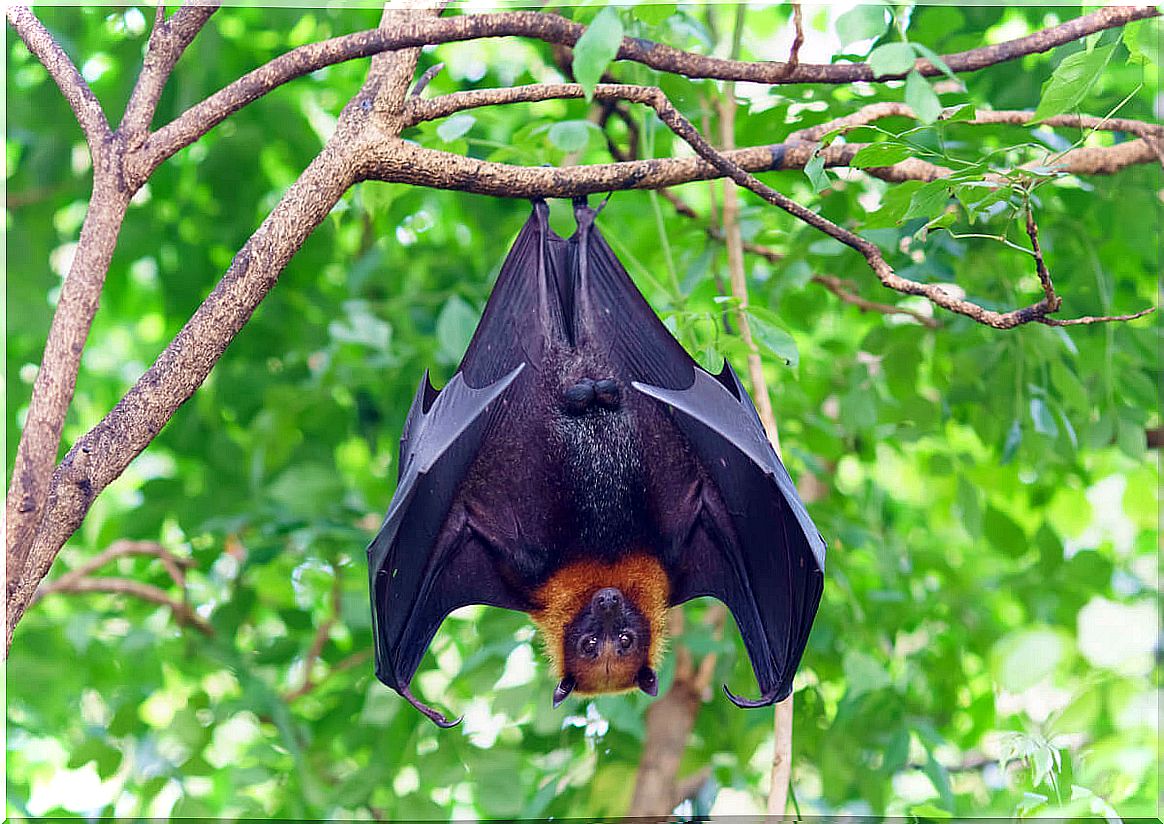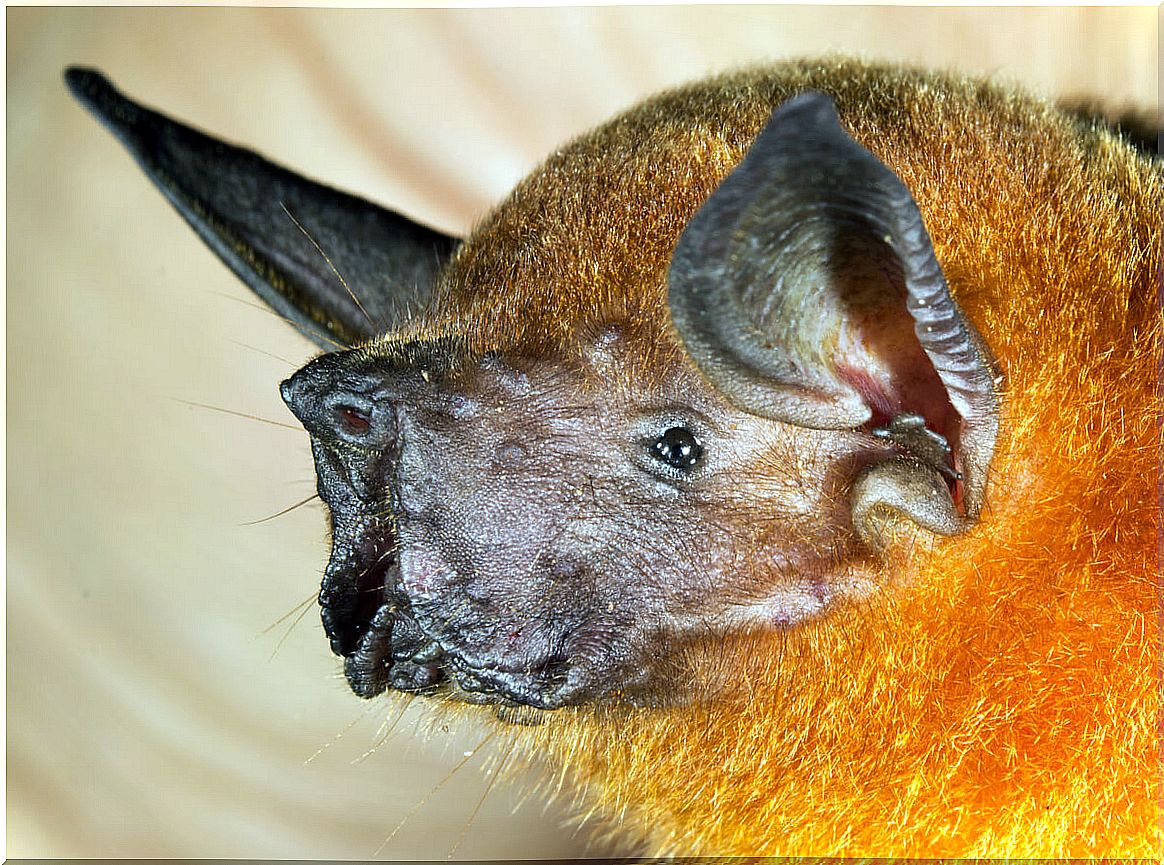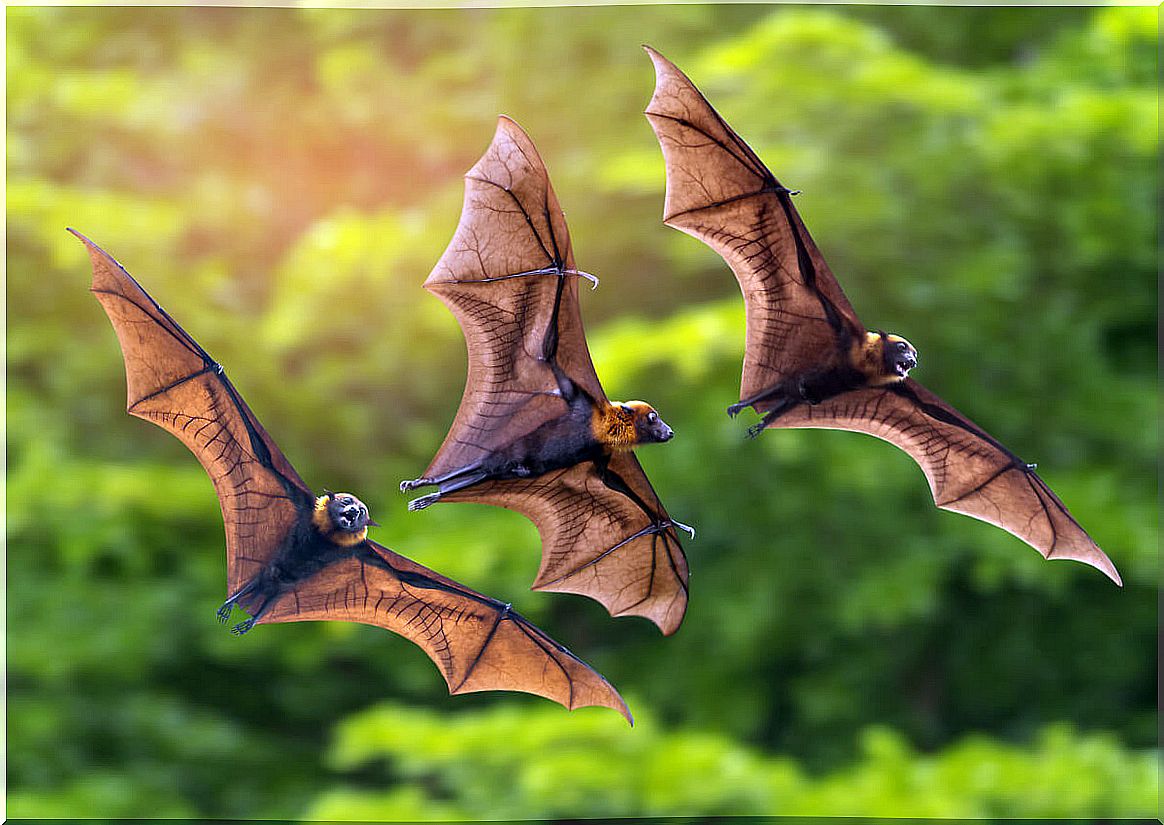Bats And Rabies: Can They Be Transmitters?

Rabies is a disease already considered as ancient, feared for generations throughout the world for its very serious consequences. Although it has been with us for a long time, it is still present after all the efforts to eradicate it.
For this reason, new species are being sought that may be responsible for the permanence of the virus in nature. That’s where the relationship between bats and rabies is discussed. The reality is that we are very used to hearing about the dog, the wolf or the fox as transmitters, but are we aware that there are other possibilities?
Rabies in carnivores
This disease in mammals other than chiroptera – bats and relatives – is caused by the common rabies virus, a Lyssavirus. Although this virus is capable of infecting any mammal, only carnivores can act as reservoirs.
There is a strong adaptation of the different strains of the virus to the animal species that they infect. In this way, transmission barriers are established between taxa and the virus specializes in a single type of mammal.
In any case, there are so-called “splashes” or occasional transmissions of strains associated with one species, to a different one. Human cases of rabies are a typical example of this.
The problem arises when one of these splashes bears fruit in an adaptation to the new species, which is known as a “specific jump.” Thus, a new reservoir is created and, therefore, a new epidemiological cycle. Fortunately, specific jumps are very rare, as they often cause new forms of the disease.

Bats and rabies, a successful specific jump
The natural, epidemiological, and etiological history of rabies in bats is different on each continent. In America, bats are infected with the common virus, although studies show some differences with strains of carnivores. On the other hand, in other continents rabies in bats is caused by other different Lyssaviruses.
It is quite common to discover new strains of the rabies virus in wild bat populations. The distribution of these strains to the rest of the world, as they are flying animals, is simpler, although it is true that few cases of human rabies find their origin in these new strains.
In addition, infection in bats is usually mild or asymptomatic, unlike what occurs in other mammals. Thus, it is much more difficult to detect and control their dispersion. In fact, rabies is believed to have existed in bats since ancient times, making the specific jump many years ago.
Is there an epidemiological connection between rabies in bats and in other carnivores?
The only continent where the same strain of the virus is responsible for both infections is America. In addition, in its tropical areas there are blood-sucking bats, whose eating habits cause frequent interaction between species. This creates a serious problem, not only for wildlife, but for public health and livestock.
Chiropterans usually have insectivorous or frugivorous habits, so they hardly interact with other mammals. For this reason, in other continents – as is the case in Europe – few infections in terrestrial animals produced by bat strains are known. In contrast, the United States and Canada often report cases in animals and humans.
This greater casuistry that North America presents compared to Europe is attributed to a probable better transmissibility of the virus to species other than bats. This prevents the results of studies carried out on one continent or another from being extrapolated to the rest.
Conclusion: Bats and rabies, one more factor to take into account
When push comes to shove, a disease that can occur in all types of wild mammals will not be easy to eradicate. In fact, in all likelihood, it will be nearly impossible. This is not to say that there is no way to prevent uncontrolled transmission or human cases.
The solution will always be to establish a powerful epidemiological surveillance system that includes all the species that can act as a reservoir. Among all these species, it is clear that there are bats.
In cities, it is very common to find colonies of insectivorous bats that can become carriers of the rabies virus towards humans. Therefore, it is extremely important to carry out adequate epidemiological surveillance on these populations. Thus, it is possible to detect early whether or not there is circulation of the virus.
The best strategies for fighting rabies, therefore, will include these 2 important points:
- Active surveillance systems in animals likely to be transmitters.
- Methods of reducing the number of susceptible animals through vaccination.

It should not be forgotten that the constant collection of information on the wild reservoirs of the virus is essential to keep these strategies up to date. In order to design new techniques that help keep the dreaded rage at bay, you have to fully understand the biodiversity that surrounds us.









